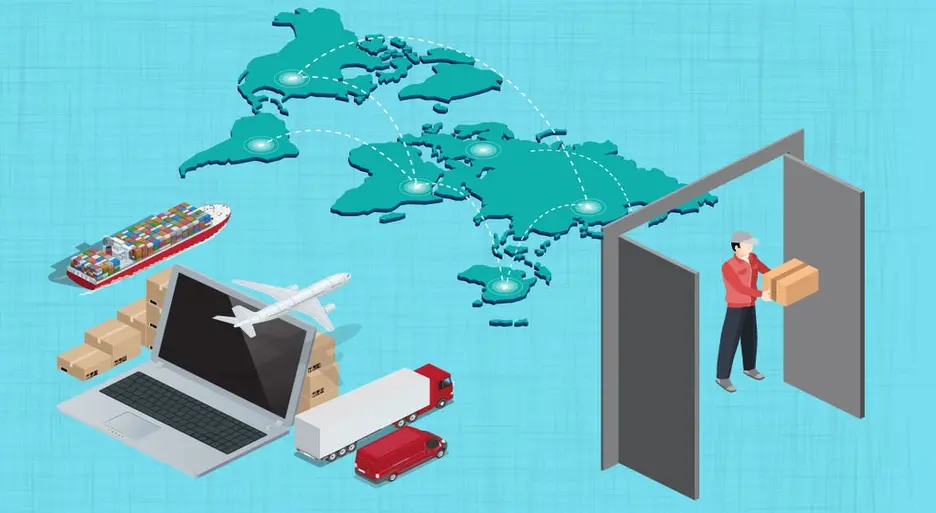How to take your business global

The digital revolution is also transforming possibilities for internationalizing enterprises. Digital solutions exist for logistics, secure payment and collection, and optimization of internal costs. Digitalization also has the potential to shrink geographic distances—which in the past limited visibility and trust among different market actors—thereby facilitating the development of trusted trade relationships.
Additionally, a recent publication by the Latin American Association of Development Financing Institutions on the challenges of Latin American international trade reveals that Latin American and Caribbean trade volumes have hovered around 6 percent annually since 1975, compared with growth in other regions, East Asia for example, whose volumes went from 5 percent to 22 percent of global trade over the same period.
Similarly, intra-regional trade activity is also less integrated than in other areas. In 2015 it accounted for 15 percent of total trade, compared to intra-regional flows of 54 percent in Asia, or 70 percent in the European Union. From this standpoint, there is untapped potential in the region for internationalization.
Financing, a key step
One crucial aspect for internationalizing enterprises is access to finance—a challenge that can turn into a barrier, above all in the economies of the region with less developed financial systems, and for smaller-sized businesses. Financing for internationalization can take the form of different financial instruments. For example, by using factoring, companies can pre-collect on their sales by yielding their rights to a financial company (in exchange for a commission), thereby obtaining financing more quickly and potentially reducing management costs for bill collection. Unlike conventional loans, factoring does not require property or inventory to be put up as collateral for the funds since the credit line is sales-based.
One limitation when it comes to this type of financing, however, is that factoring firms can select invoices based on their quality, amount, and ease of recovery. Banks can also provide financial instruments to reduce exchange risk, whether through exchange risk insurance or futures markets, just to name a few.
Factors exist, however, that make the lower availability of credit for international trade, versus credit for domestic trade, even worse, including: (i) the potential for substantially longer product delivery and payment times in foreign markets; (ii) payments in different currencies, causing currency mismatch risks; (iii) legal systems that vary from country to country; and (iv) additional risks associated with internationalization such as changes to trade regimes or importer licenses being cancelled, which can increase the risk profile and costs of these types of transactions.
Which way to go?
Given the benefits of internationalization for companies and economies, many of the region’s development banks, such as Banco do Brasil, Bancoldex, or Bamcomext, have financing programs for these kinds of enterprises. Multilateral institutions like the IDB Group have also launched efforts to support the internationalization of companies. For example, the IDB has created a platform, ConnectAmericas, that is intended to help identify business and financing opportunities for MSMEs and provide training on matters like developing international business plans. The IDB has also developed an online course on international trade finance to improve understanding of financial instruments and how they work.
IDB Invest, the IDB Group’s private arm, helps facilitate access to finance for international trade operations through its international trade finance facilitation program, which provides technical cooperation, knowledge, and financial products for banks, supporting the expansion of international trade activities for their importer and exporter customers. IDB Invest also offers solutions for supply chain finance by, for example, providing funds for rediscounting credit rights issued by suppliers of companies from different industries, and supporting firms’ efforts to internationalize, such as in the case of financing given to a Brazilian company for its first move toward internationalizing in Paraguay, thereby enabling it to boost production and strengthen its value chain.
The IDB Group is thus seeking to support the internationalization of enterprises so they can enjoy greater business security thanks to having diverse sources of revenues and risks, or venture into or boost their share of target markets, or surmount problems of scale, among other potential benefits.
LIKE WHAT YOU JUST READ?
Subscribe to our mailing list to stay informed on the latest IDB Invest news, blog posts, upcoming events, and to learn more about specific areas of interest.
Subscribe



